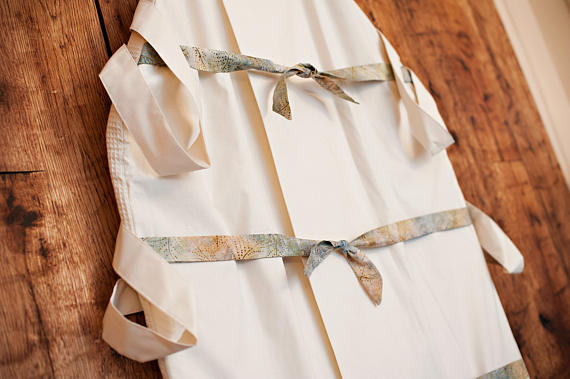

Then in her 60s, Cargill wasn’t dying in the acute sense but came to Dr Interlandi after losing both her parents, making her acknowledge her own mortality.
Funeral shroud clothing series#
At that moment, I went from touching a dead body to holding my grandfather’s hand.” When it comes to burial garments, the act of dressing is perhaps more important than the piece itself.Īs Dr Interlandi worked on her first commission, one by a spirited woman named Kaalii Cargill, the two were followed in an episode of ABC’s documentary series Anatomy. So by the time I’d pulled my grandfather’s arm out of the cuff, I was holding his hand. “You have to weave your whole arm up the sleeve, hold their hand and pull it through. To some, dressing a dead loved one, a corpse, can seem scary or even gruesome – to which Dr Interlandi shares a memory of dressing her grandfather in his shirt. “So, there has to be a point of ease of dressing, it has to be physically easy because emotionally it's already extremely heavy,” says Dr Interlandi. B oth Dr Interlandi and Duijvestein recognise the therapeutic value in the act of dressing a deceased.


Burial garments need to be easy to put on, either by a funeral director like Duijvestein or preferably by the families themselves. The countless silk drawcords and intricate wrap-like silhouettes of her designs serve more than just an aesthetic purpose. Synthetics, including plastic buttons and most overlocking threads, will last hundreds of years.” But, as she also reflects: “Families aren’t that interested in thinking about their loved one’s body decomposing.” “Plant-based fibres, like cotton or linen, tend to go the quickest. She explains that these are protein-based fibres, which is what the body is made out of as well. After analysing countless garments she’s recovered from graves during her doctorate, Dr Interlandi crafts her biodegradable designs mostly from silk and wool. After all, they have no need for rubber-soled footwear or high-durability nylon tracksuit pants.Īs a sustainable practitioner, Duijvestein urges families to dress their dead in natural fabrics. But, he wasn’t going to be walking anywhere.” With sustainability becoming an increasingly pressing issue on everyone’s mind, it seems only rational to dress the dead in biodegradable outfits. “W e put his shoes on and the material scientist in me, the part that understands materiality and durability, noted that these shoes were going to be around forever. She reveals her inspiration came when dressing her grandfather for his funeral. Perhaps, like Y2K mini-bags and low-rise denim, it’s time to bring them back.Īs a designer of bespoke funeral outfits, Dr Interlandi is already introducing the burial shroud into our modern time of self-expression and selfies. Although they are still common in an array of cultures and religions (the Islamic Kafan and Jewish Tachrichim come to mind), burial shrouds are no longer the norm in western funerals. Some burial shrouds doubled as bridal nightwear or wedding dresses – like a uniform for someone’s most transformative moments. Often taking the shape of a tunic or nightdress, these were sewn by women prior to their wedding and kept until needed. Surely the two call for different dress codes? Up until recently, people wore a dedicated death outfit to their own funeral. Still, these comfortable t-shirts and tracksuits are still made for life, not death. “We're trying to comfort them, and we're trying to comfort ourselves. But it makes sense, counters Dr Pia Interlandi, a fashion and textiles academic and designer of funeral fashion. To an objective onlooker, it might seem strange to dress the dead in something cosy.

“It feels natural to dress someone in their favourite clothes, like an outfit that made them feel comfortable when they were still alive.” She frequently spots deceased wearing hoodies, tracksuit pants, printed t-shirts and pieces like kimonos, which float between loungewear and ritual garments. But these garments play a key role in the grieving process and like any product of fashion, they contain layers of material and symbolic meaning.Īccording to funeral director Susanne Duijvestein, deceased today are dressed with comfort and individual expression in mind. But what about the garments worn after life? Funeral wear (meaning, the outfit someone wears to their own burial, cremation, or another final service) may seem like a morbid branch of occasion wear. Garments like these play a significant role in modern life’s most transformative experiences. There’s a certain thrill in dressing for a special occasion, whether it’s a white wedding dress, a graduation gown, or a first-day-of-work vintage suit.


 0 kommentar(er)
0 kommentar(er)
